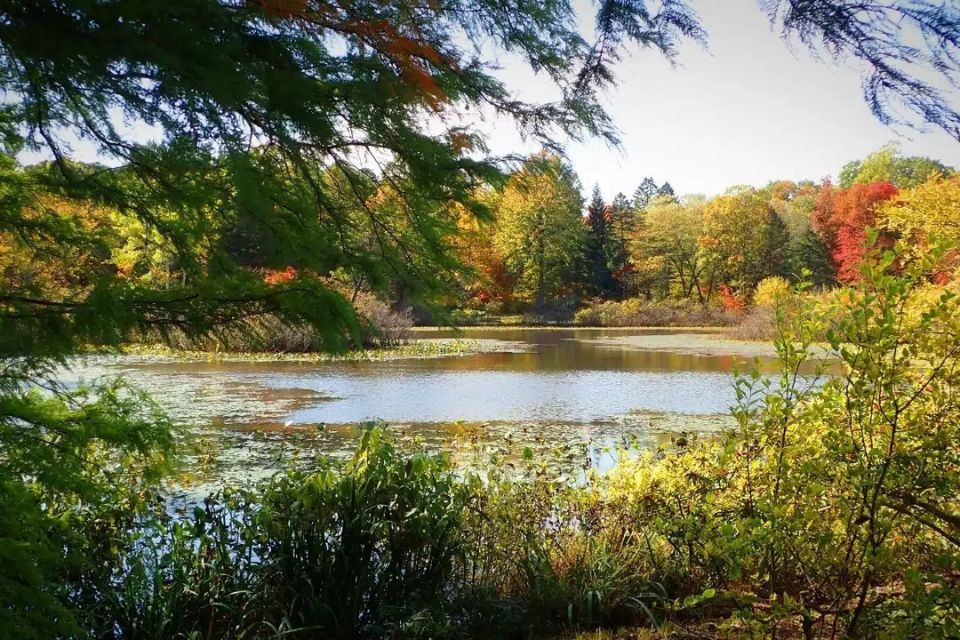
National Parks in Ohio: Explore the 9 Ohio National Parks (2023 Update)
- Jennifer Melroy
- Last Modified December 12, 2023
- First Published on August 22, 2021
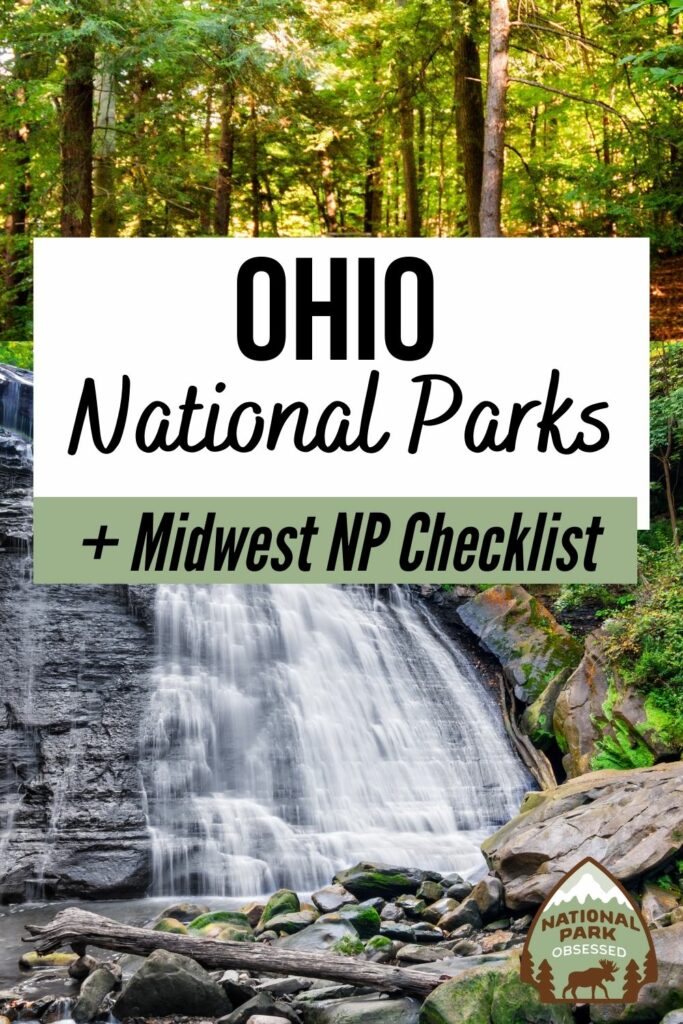
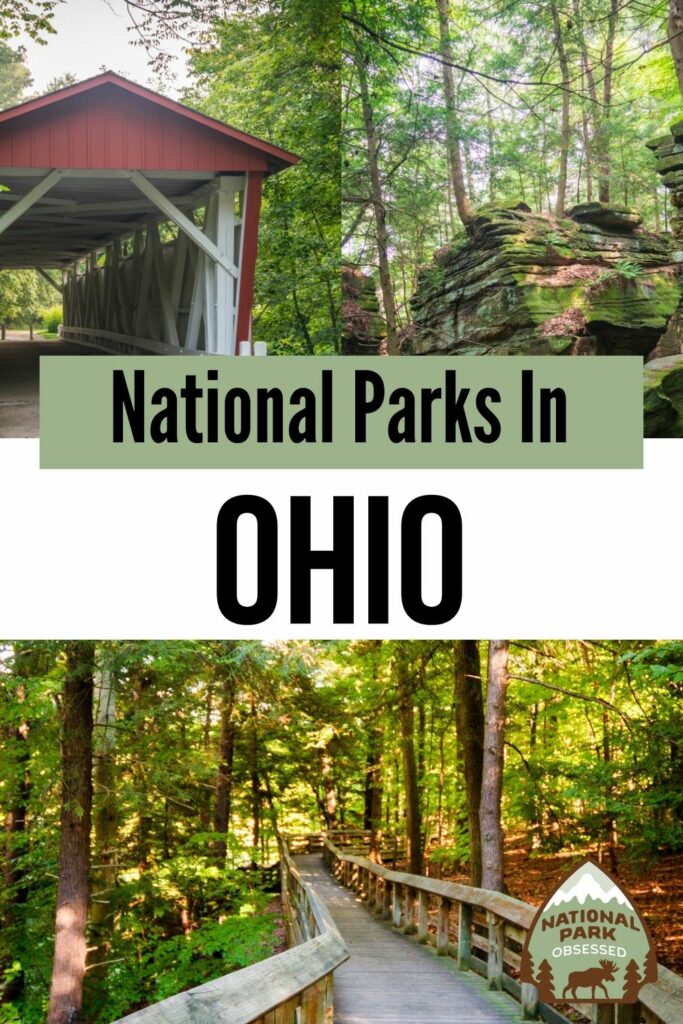
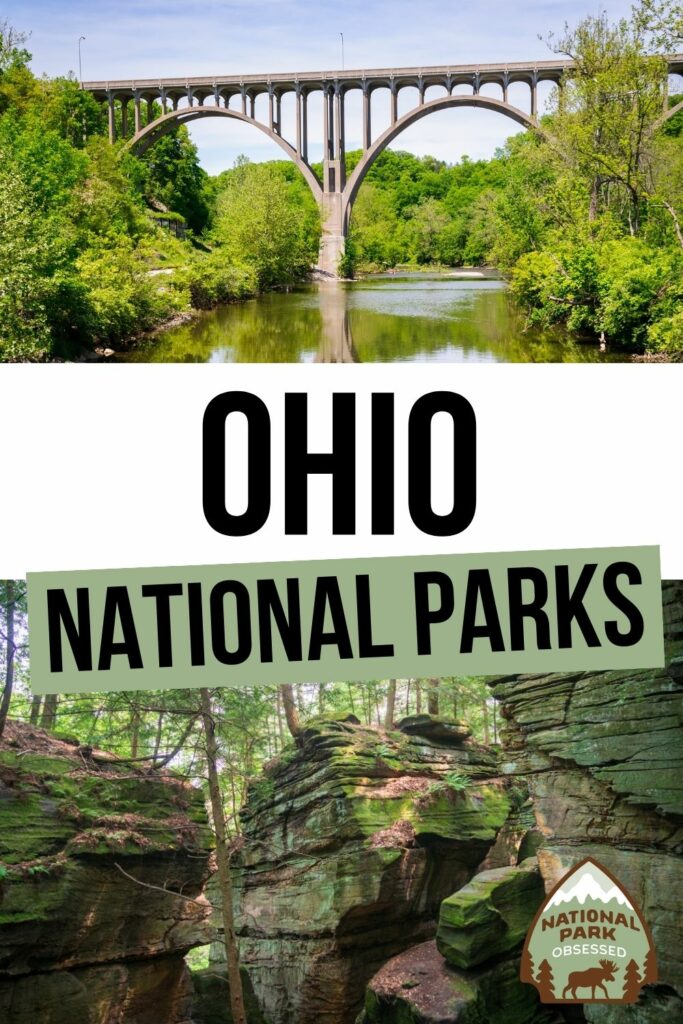
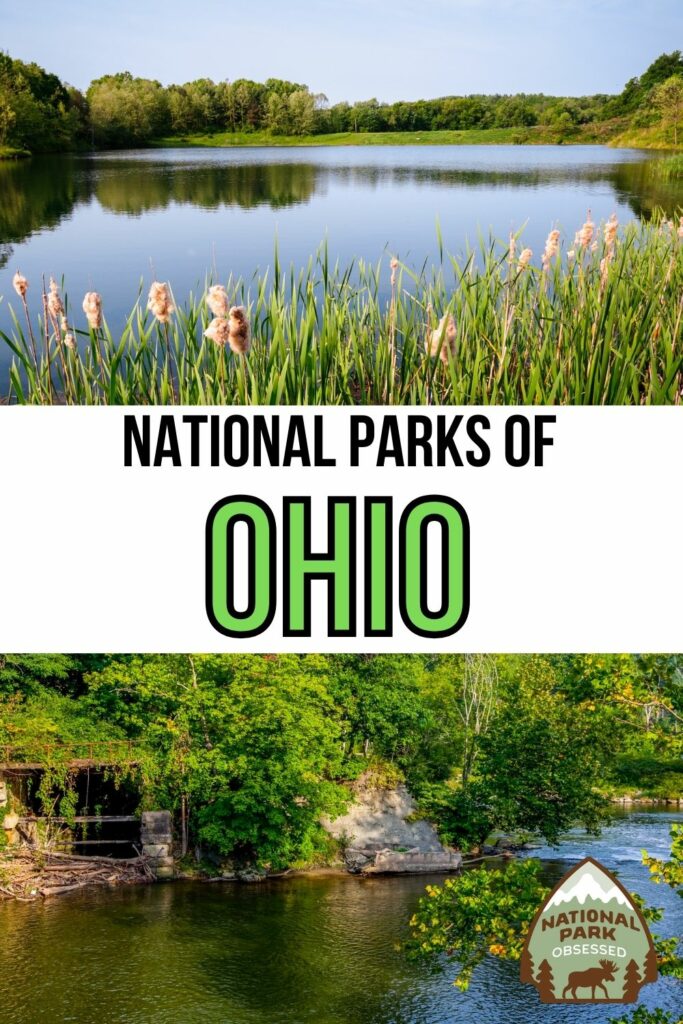
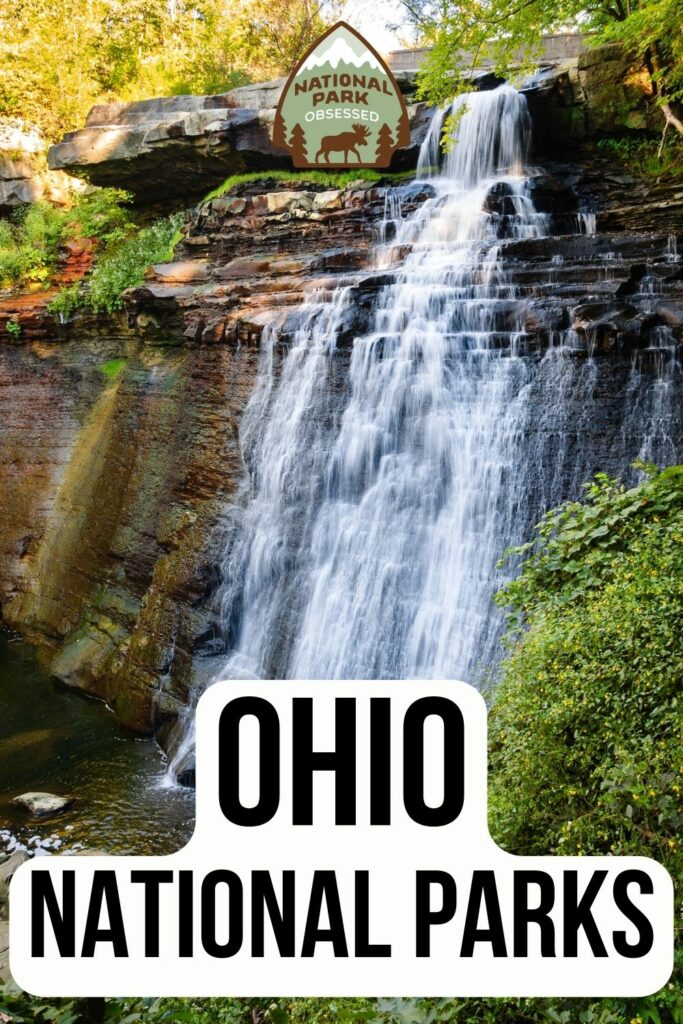

Ohio is commonly known as the home of the Buckeyes and is rich in incredible historic, natural, and cultural sites throughout the state. Coined as the Birthplace of Aviation, the area is recognized for its many heritage sites related to airplanes and aerospace. The state is also full of historical relevance, with many sites remembering prominent figures like past presidents and events from the 1812 war between the United States and its allies, among other major events of the past. Centuries ago, many Native American tribes settled in this area. Some of what remains from their culture are preserved within the area and open to visitors.
Aside from these man-made areas to explore, the state is rich in natural attractions. Ohio boasts some of the most beautiful forests, wooded areas, grasslands, and views of the river. There are currently 9 National Park sites available for your next adventure in this Midwestern region that comprises many examples of the plethora of natural, historic, and cultural sites available in the state.
Planning to explore the Midwest? Download your free Midwest National Park Checklist HERE.
In this article. . .
This post may contain affiliate links, meaning if you book or buy something through one of these links, I may earn a small commission at no extra cost to you! Read the full disclosure policy here
National Park Trip Planning Resources
Here are some of the best resources to plan your national park travels. If you are new to the parks, National Park Travel Planning Bundle is the perfect resource to help you plan your dream trip, get it planned and reduce the stress of planning your National Park trip.
- National Parks Must-See: This is a concise guide to each of the 63 parks. Each guide is 1 page and features the best activities and hikes along with need to know the information to jump-start planning for that park. >>> Buy Now
- National Park Itineraries: Let someone else do the planning with our pre-planned National Park Itineraries for less than $6 a day.
- Get Free Entrance: The America the Beautiful National Park Pass is an $80 pass that is valid for 12 months. The pass provides free entrance to the National Parks and more than 2,000+ other federal lands.
- Make sure you have a National Park Passport: Here is my favorite National Park Passport.
- For Flights: Use Skyscanner to get the best prices on your flights.
- For Rental Vehicles: Browse for deals on rental cars at RentalCars.com. Or rent an RV or campervan with RVshare or Outdoorsy.
- For Hotels: I book my hotels on Hotels.com and Booking.com.
- For Vacation Rentals: I love VRBO for my vacation rentals.
- For Camping: If making camping reservations in the parks, I use Recreation.gov. For private campgrounds, I use Campspot.
- Buy Outdoor Gear: I get most of my outdoor gear at REI.
- Looking for National Park Gift Ideas: Here are the 55+ Best National Park Gifts Ideas.
- Don’t forget travel insurance: I get my travel insurance through World Nomads.
List of National Parks in Ohio
There are 9 National Parks in Ohio, and they received 2.9 million visitors in 2020 and generated over $85.8 million in tourism economic benefits. The majority of visitors (2.7 million) visited Cuyahoga Valley National Park. The rest of the parks saw between 2,000 and 40,000 visitors.
- Charles Young Buffalo Soldiers National Monument
- Cuyahoga Valley National Park
- Dayton Aviation Heritage National Historical Park
- First Ladies National Historic Site
- Hopewell Culture National Historical Park
- James A. Garfield National Historic Site
- North Country National Scenic Trail
- Perry’s Victory and International Peace Memorial
- William Howard Taft National Historic Site
Affiliated Areas
- David Berger National Memorial
- Fallen Timbers Battlefield and Fort Miamis National Historic Site
- Lewis and Clark National Historic Trail (IA, ID, IL, IN, KS, KY, MO, MT, NE, ND, OH, OR, PA, SD, WA, WV)
- National Aviation Heritage Area
- North Country National Scenic Trail
Ohio National Parks also provides support and management to Ohio and Erie National Heritage Canalway, 3 Wild and Scenic Rivers (Big & Little Darby Creeks, Little Beaver Creek, and Little Miami River) as well as 3,957 National Register of Historic Places Listings.
There are 76 National Historic Landmarks, 23 National Natural Landmarks, 916 Places recorded by the Heritage Documentation Program, and over 1.08 million objects in the Ohio National Parks Museum Collections. There are 255 Archaeological Sites in the Ohio National Parks.
Ohio is home to 74 State Parks and best of all they are ALL FREE.
Map of National Parks in Ohio
Ohio National Parks
Charles Young Buffalo Soldiers National Monument
The Charles Young Buffalo Soldiers National Monument or “Youngsholm” remembers the life of the celebrated colonel, freedom fighter and pioneer, Charles Young. Born a slave, Young strived to become a soldier despite racism and oppression. Through his work ethic and skills, he climbed the ranks and became one of the highest-ranking African-American soldiers of his time. One of his most notable achievements is a
497-mile horseback journey in hopes of proving his health to fight as an American during the Civil War. Today, he is commemorated as a Civil Rights leader and inspiration to many.
The monument is the Young home located in Ohio that was purchased by Young himself. Visitors can learn more about his childhood, military career, his protests, and his life after the military. Through this, the park aims to commemorate his legacy for generations after.
In 2013, the house was recognized as a unit of the National Park Service under the Antiquities Act of President Obama.
Things to do: Guided Tours, Visit the National Afro-American Museum and Cultural Center, Biking and running enthusiasts join the challenge to follow the 497-mile journey that Young once took.
How to get there: The park is located in Wilberforce, Ohio near Wilberforce University. There are three major airports nearby: Dayton International Airport, The Port Columbus International Airport, and the Cincinnati/Northern Kentucky Airport. Visitors can also opt to travel to the park using their automobiles via U.S. Route 42.
Where to Stay: The monument is located southwest of Wilberforce, Ohio. There is no available lodging in the park itself but there are many available overnight accommodations around Wilberforce and Xenia areas.
Entrance Fee: Free
Official Website: Click Here
Map: Download
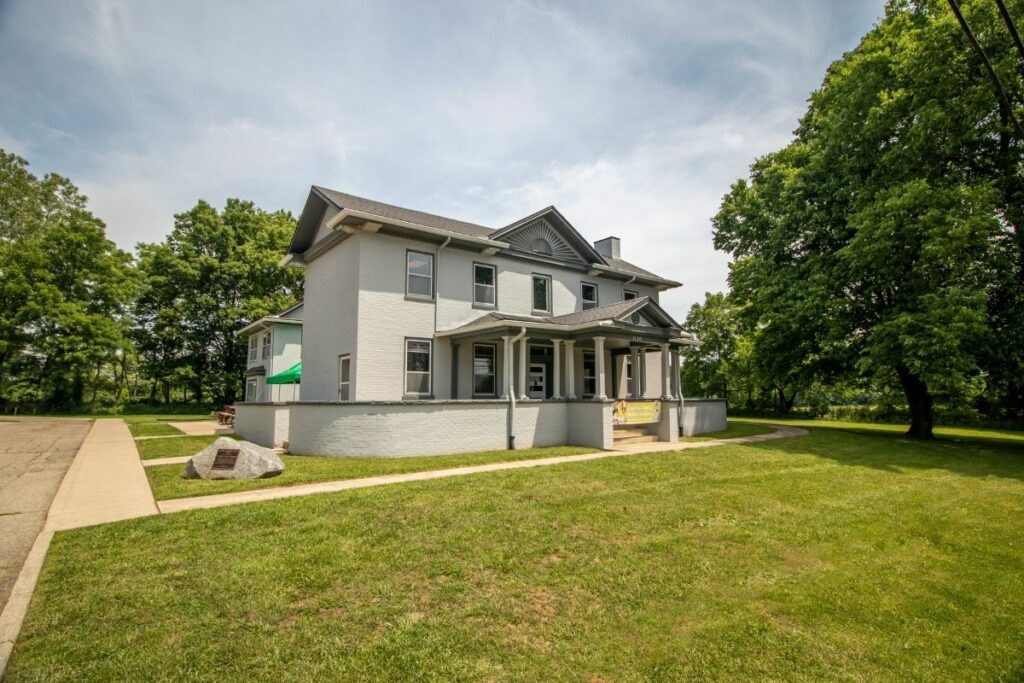
Cuyahoga Valley National Park
Located between Akron and Cleveland in Northeast Ohio, Cuyahoga Valley National Park is a nature-lovers escape from urban areas. The National Park restored and maintained the rural landscapes along the Cuyahoga River. Through this endeavor, many wildlife like beavers and bald eagles returned to seek refuge in the park and native plants thrive within the area. Now, visitors can enjoy reconnecting with nature through the scenic routes of deep forests, rolling hills, and open farmlands.
With more than 32,000 acres of land, the park features many attractions to enjoy and outdoor activities to try. There are picturesque trails for hiking and biking where you can enjoy the view of rivers, rock formations, and even caves. The historic Towpath Trail also allows you to visit the Stanford House, Frazee House, and more. Visitors also frequent the park to go fishing or bird-watching.
Formerly a National Reclamation Area, the Cuyahoga Valley was formally designated a National Park in the year 2000.
Things to do: Scenic Train Ride, Ohio & Erie Canal Towpath Trail, Fishing, Hiking, Bird-Watching
How to get there: There are two major airports in the area: Cleveland Hopkins International Airport and Akron-Canton Regional Airport. Automobiles can make their way to the Boston Mill Visitor Center located at 6947 Riverview Road, Peninsula, Ohio.
Where to Stay: There is available lodging in and around the park. Stanford House and The Inn at Brandywine Falls are available for guests. The park is no longer open for camping.
Entrance Fee: Free
Official Website: Click Here
Map: Download
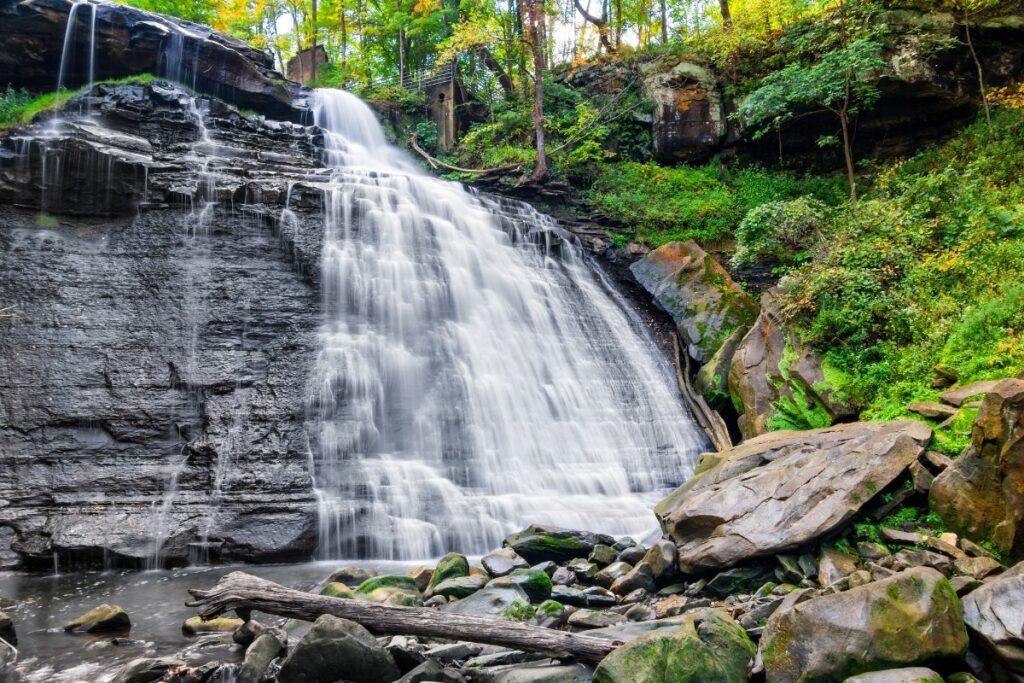
Dayton Aviation Heritage National Historical Park
Located in Dayton, Ohio, this Historical Park is the birthplace of aviation. It remembers the lives and work of three famous figures: Wilbur Wright, Orville Wright, and poet Paul Laurence Dunbar.
The Wrights brothers were credited as the first to invent and operate a motorized air vehicle that paved the way to what we now know as airplanes. Much of where the brothers lived around the Dayton neighborhood was destroyed due to the riots during the seventies and neglect of the time passed. However, one of the sites was preserved. It is an old bicycle shop that was owned by the brothers themselves. The Park now aims to remember their legacy for generations to come.
The Dayton Aviation Heritage National Historical Park also commemorates the life and prolific work of African-American poet, Paul Laurence Dunbar. This acclaimed writer produced many novels, plays, short stories, lyrics, and over 400 published poems during his time. One of his works has inspired the famous I Know Why the Caged Bird Sings by Maya Angelou. His work and history are now remembered through this park.
After the efforts of locals and lobbying to the congress, this area was designated as a National Historical Park in 1992.
Things to do: Guided Tours, Explore the Flying Field, Visit Historic Landmarks: The Paul Laurence Dunbar House Historic Site, The Wright-Dunbar Interpretive Center, and The Huffman Prairie Interpretive Center
How to get there: The nearest available airport is the Dayton International Airport. By car, visitors can take I-75 North to the Wright Cycle Company Complex/Wright-Dunbar Interpretive Center or the Huffman Prairie Flying Field Interpretive Center.
Where to Stay: Chain hotels and lodging are available outside of the park in the Dayton area. Camping is not allowed within the park.
Entrance Fee: Free
Official Website: Click Here
Map: Download
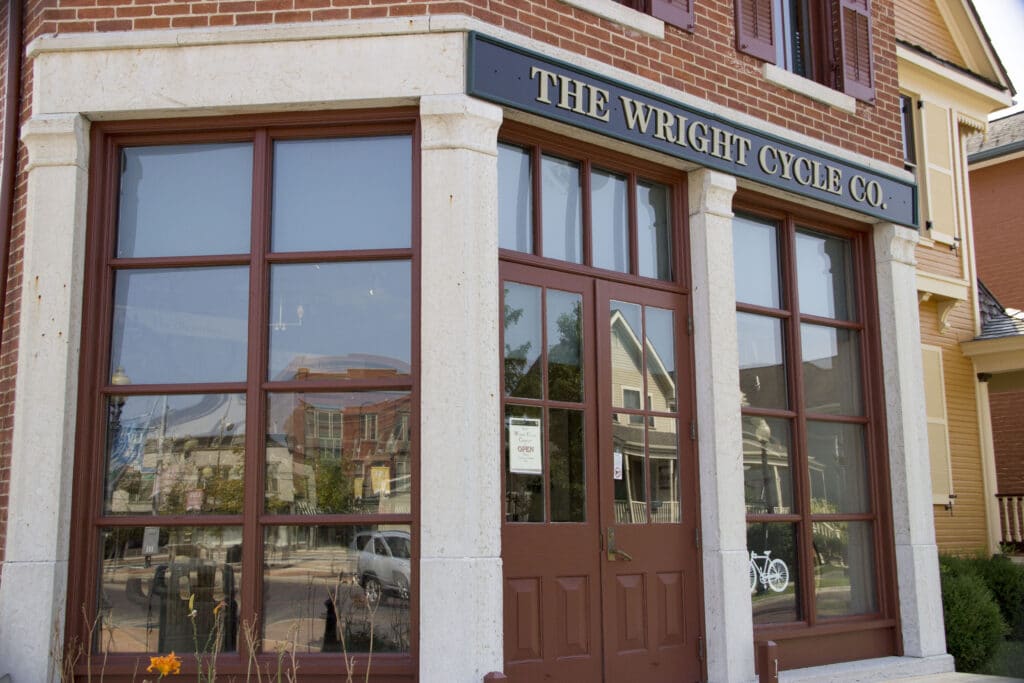
First Ladies National Historic Site
Located in Canton, Ohio, the First Ladies National Historic Site tells the story of how the role of a First Lady evolved. It aims to preserve and educate about the undeniable contributions of different First Ladies throughout the years.
The idea of commemorating the lives of First Ladies first came to Mary Regula, wife of Ohio congressman Ralph Regula. During her residency in Washington, she frequented deep conversations with the First Ladies, and her work brought about the creation of the National First Ladies’ Library that houses this work. This Library now owns, in partnership with the National Park Service, the First Ladies National Historic Site.
This site consists of two buildings, the Ida Saxton McKinley Historic Home and the Education & Research Center. The Saxton house preserves the Victorian home of Ida McKinley, the wife of U.S. President William McKinley.
Things to do: Guided Tours, Museum
How to get there: By car, follow the I-77 Road to the Downtown/Tuscarawas Exit.
Where to Stay: There is available accommodation near the site around Stark County.
Entrance Fee: Free
Official Website: Click Here
Map: Download
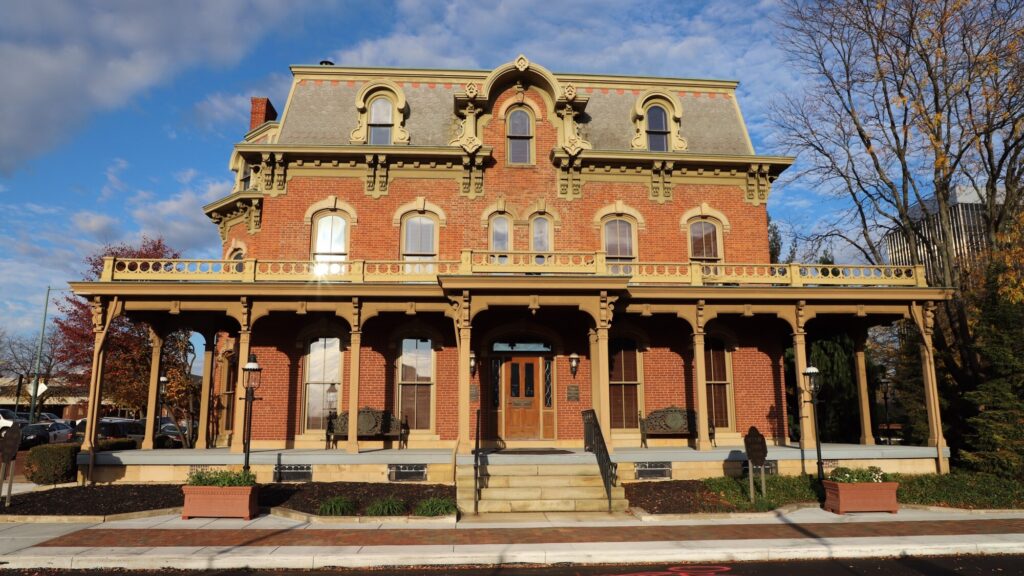
Hopewell Culture National Historical Park
The Hopewell Tradition of the Indigenous groups of Native Americans is preserved through The Hopewell Culture National Historical Park. The Park features many earthworks and even burial grounds used by indigenous people from about 200 BC to AD 500. Spread around six different units in Ohio, the historical park also showcases archaeological sites of Hopewell culture.
The Hopewell culture is applied to several native groups that lived along the Ohio River Valley and the rest of North America. The most notable site to visit is the earthworks that stood the test of time. Many of these sites were built to a monumental scale in the form of different geometrical shapes. This shows that the people who designed them had a vast knowledge of creating structures and local materials.
First declared as the Mound City Group in 1923, the area was expanded and renamed as the Hopewell Culture National Historical Park in 1992 to include other remains of these earthworks around the area.
Things to do: Guided Tours, Hiking
How to get there: The nearest major airport is the John Glenn International Airport. By car, make your way to the Mound City Group visitor center. It is located in Chillicothe, Ohio on State Route 104.
Where to Stay: There is no lodging available inside the park. There are many hotels, bed & breakfasts, and other accommodations around the Chillicothe area. Camping is not allowed inside the park.
Entrance Fee: Free
Official Website: Click Here
Map: Download
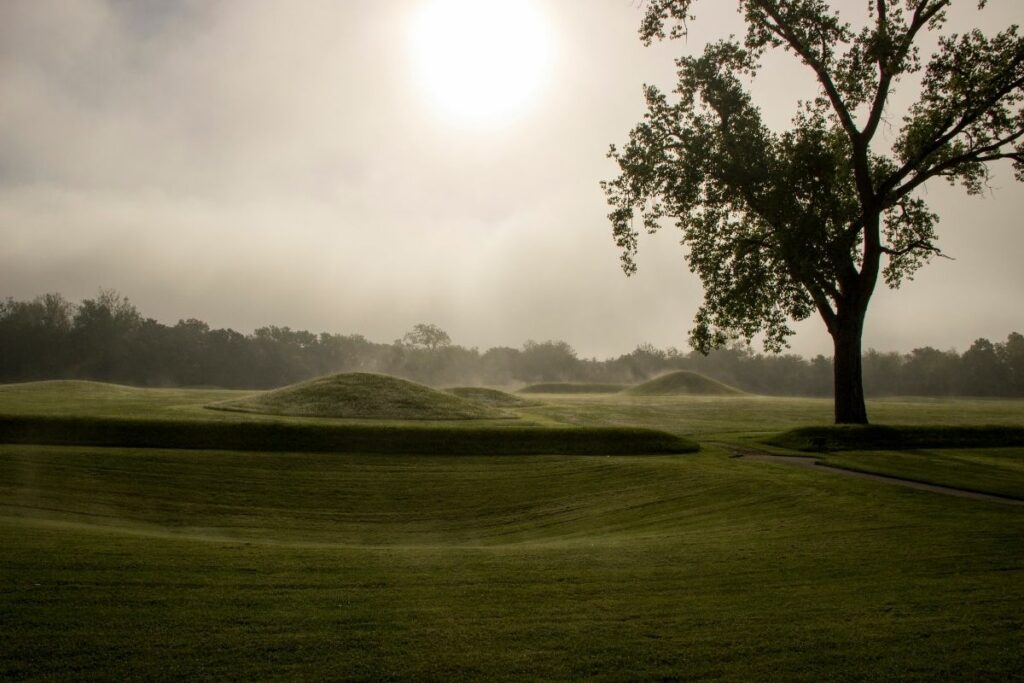
North Country National Scenic Trail
The North Country National Scenic Trail is the longest of the eleven scenic trails recognized by U.S. congress. It encompasses eight states of the country: Vermont, New York, Pennsylvania, Ohio, Michigan, Wisconsin, Minnesota, and North Dakota. The scenic trail follows some of the already existing major trails of the region like the Finger Lakes, Baker, and Buckeye Trails.
This massive trail connects over 160 public land units that include parks, forests, historic sites, and more. In Ohio specifically, Wabash Cannonball Trail and the Buckeye Trail are included in this larger connected pathway. Visitors are able to see a wide array of natural, historical, and cultural attractions throughout.
Hikers can enjoy viewing a beautiful pathway full of different rich wildlife, stop by historic landmarks throughout the area, and stay in campsites overnight. This impressive trail passes through many forests, flatlands, farmlands, major cities, and even quaint towns. On hotter days, people explore the area by foot while other areas are open for skiing and snowshoeing when there is enough snow. There is truly something for everyone.
This trail was declared under the care of the National Park Service as early as 1980. Other sections are included throughout the years. As of 2019, the trail stands at 3,129 miles.
Things to do: Visit historic sites and landmarks, Trekking, Hiking, Skiing, Horse-back Riding, Camping
How to get there: This trail is accessible in several points across eight different states. In Ohio, the scenic trail follows the already existing Buckeye Trail. Many major cities and regional communities have nearby major airports. This is also accessible by car using different entry points throughout the eight states.
Where to Stay: There are many inns, hotels, and campgrounds around the area of the trail.
Entrance Fee: Free although historic points along the trail may charge an entrance free.
Official Website: Click Here
Map: Download
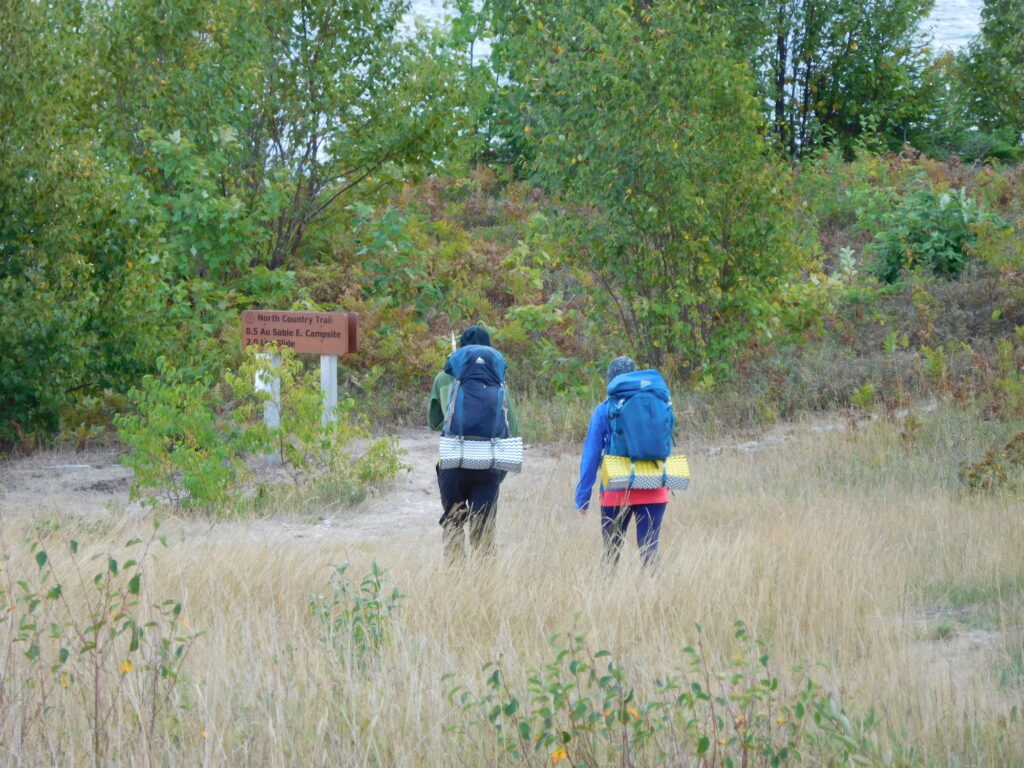
James A. Garfield National Historic Site
Located in Mentor, Lake County, Ohio is the beautiful home of James Abram Garfield, the 20th president of the United States and his wife, Lucretia Rudolph Garfield. The James A. Garfield National Historic Site preserves the 7.82 acres of land that holds the Lawnfield estate and surrounding property. The site now includes the home, visitor center, and several outbuildings.
In 1980, the children of James A. Garfield donated the home to the Western Reserve Historical Society as a museum. After acquiring, the site was renovated for six years and has now become one of the most accurately represented homes of the 19-century presidents. Visitors are greeted by a wide porch, once used by the president himself to greet visitors during his campaign. Inside the home, original antique Victorian furniture can be found along with other exhibits.
The James A. Garfield National Historic Site was declared as a unit of the National Park System in 1980.
Things to do: Tours, Museum Exhibits
How to get there: The site is located along Mentor Avenue of Mentor, Ohio. The nearest airport is the Cleveland Hopkins International Airport.
Where to Stay: There are many hotels that offer overnight accommodation around the area of Mentor, Ohio.
Entrance Fee: $10, Free with the America the Beautiful Pass.
Official Website: Click Here
Map: Download
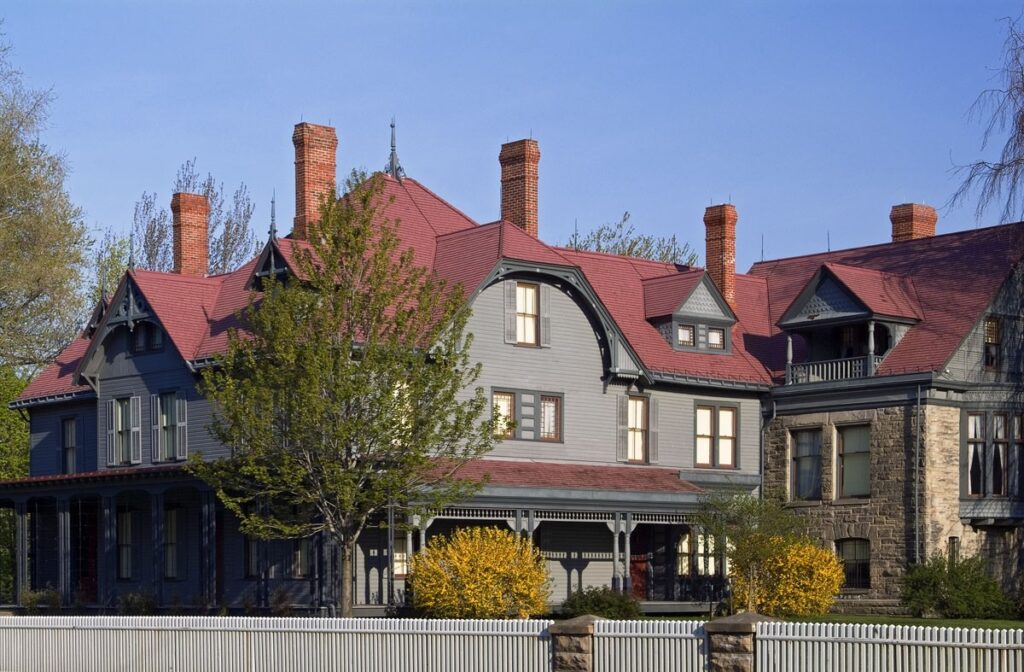
Perry’s Victory and International Peace Memorial
Back in 1812, the Battle of Lake Eerie commenced and Perry’s Victory and International Peace Memorial aim to remember all the lives of those who fought during this war. The Battle of Lake Erie took place in Ohio’s South Bass Island in which Commodore Perry led his fleet to victory. This battle became pivotal in the long engagement between American and British forces. This memorial also serves as a reminder of the long-lasting peace that was obtained between Great Britain, Canada, and the U.S. after that war.
The memorial features a 352-foot monument, which is the world’s tallest Doric column and includes an observation deck wherein visitors can view the surrounding areas. The monument is even forty-seven feet taller than the Statue of Liberty and stands proud to remember this war and commemorate the lives of the fallen. Six of the slain soldiers are now buried in the area as their final resting place.
The monument became a National Park Service Memorial in 1936.
Things to do: Explore the Visitor Center, Visit the Memorial
How to get to there: Located within the Village of Put-in-Bay which is on South Bass Island. The Island is accessible by ferry boats, airplanes, airboats, and private boats. Visitors opt to use the Miller Boat Line or the Jet Express to get to the island.
Where to Stay: There are many hotels and resorts that offer accommodation in and around Put-in-Bay.
Entrance Fee: Free
Official Website: Click Here
Map: Download
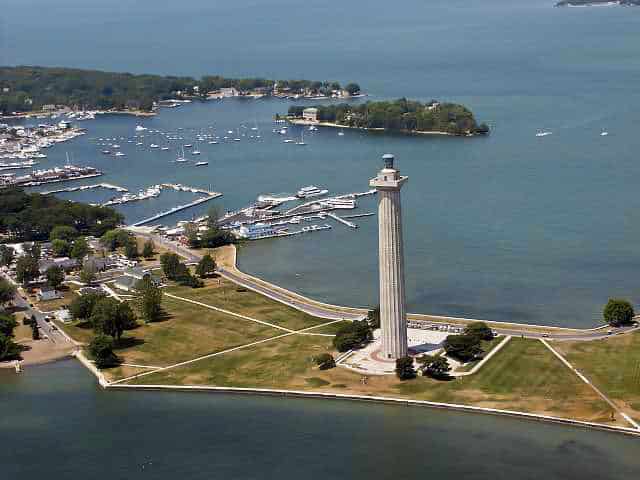
William Howard Taft National Historic Site
William Howard Taft was the 27th president and the 10th chief justice of the United States. His birthplace and childhood home is a beautiful two-story Greek Revival house built around 1845 that sits atop a Cincinnati hill. Years later, it now stands as part of the William Howard Taft National Historic Site. This location preserves Taft’s home and shares the lives of the late president, the first lady, and their family.
William Taft or otherwise known as the “Gentle Giant” was famous for being the only one to hold positions in the two offices. He was elected president in 1908 and the chosen successor of Theodore Roosevelt. He was known for his work ethic, dedicated civic duty, and love for education.
The William Howard Taft National Historic Site was declared as part of the National Park Service in 1969 to give guests a glimpse of the environment and neighborhood this late president had.
Things to do: Guided Tours, Visit the Education Center
How to get there: The nearest airports in the vicinity of this site are the Cincinnati/Northern Kentucky International Airport, Dayton International Airport, and Port Columbus International Airport. Visitors opt to take the I-71 or I-75 to reach this site in Cincinnati.
Where to Stay: There is no lodging or camping grounds available inside the park. Visitors can opt to choose from the many available hotels and other accommodations in the Greater Cincinnati Area.
Entrance Fee: Free
Official Website: Click Here
Map: Download

Planning to explore the Midwest? Download your free Midwest National Park Checklist HERE.
Associated Sites of Ohio
David Berger National Memorial
Located in Beachwood, Ohio, the David Berger National Memorial is a standalone sculpture that honors the memory of David Berger and the rest of the 11 Israeli athletes that were murdered in the 1972 Olympic Games in Munich, Germany.
David Berger was an American weightlifter that was born and raised in Ohio. During his education at Columbia University, he continued to compete as a weightlifter in different events. He then emigrated to Israel where he competed with the Israeli team in the 1972 Olympic games where he and his 10 teammates were taken hostage and killed.
The David Berger National Memorial commemorates the efforts of this athlete and remembers his life long with the 10 other athletes that were slain in this tragedy. The beautiful steel sculpture weighs about 6000 pounds and is nearly 14′ high, 11′ wide. It is made of a highly oxidizing material that erodes through time. That material brought a rich rust color and granular texture. The sculpture depicts the five Olympic rings broken into eleven segments that represent the lives taken during that time.
In 2006, the David Berger Memorial was relocated to the grounds of the Mandel Jewish Community Center in Cleveland.
Things to do: Visit the Memorial Site
How to get there: The memorial site is located on the grounds of the Mandel Jewish Community Center of Cleveland in Beachwood, Ohio. Visitors can take the I-271 route to Beachwood. The nearest airport is Cleveland Hopkins International Airport.
Where to Stay: There are many hotels and other locations offering overnight accommodation to guests in the Beachwood area.
Entrance Fee: Free
Official Website: Click Here

Fallen Timbers Battlefield and Fort Miamis National Historic Site
One of the key events during the 1812 war was the Battle of Fallen Timbers. The site consists of three areas that remember this pivotal battle. The Fallen Timbers Battlefield, Fallen Timbers Monument, and Fort Miamis make up the impressive Metropark.
The picturesque 1.5-mile Northwest Territory Trail loops around a wooded area and over a ravine is the exact area where the battle commenced. The Fallen Timbers Battlefield is a 187-acre open space of a beautiful wooded area. It was designated a National Historic Landmark in 1960. The land was owned by many different Native Indian American tribes like Ojibwe (Chippewa) and Odawa (Ottawa) Potawatomi tribes, among others centuries ago.
Less than a mile away is the Fallen Timbers Monument which consists of a 10-foot bronze statue of General Wayne, 2 stone markers and a Turkey foot. Visitors can read more about the history of this area and have an amazing unobstructed view of the Maumee River. The archaeological remains and earthworks of the instrumental British fort, Fort Miamis are also nearby.
These three sites are preserved to remember the historical events that occurred in the war of 1812. These sites were recognized as part of the National Park Service in 1999.
Things to do: Explore Visitor Center, Visit the Monuments
How to get there: This historic site is located on Jerome Road, Maumee, Ohio where the visitor center and parking lot are located. Located in Lucas County, visitors take the road north paralleling the U.S. Route 24 to the site. The nearest airport is the Toledo Express Airport and the Detroit Metropolitan Wayne County Airport.
Where to Stay: There are many hotels and camping grounds around Lucas County and nearby the Metropark.
Entrance Fee: Free
Official Website: Click Here
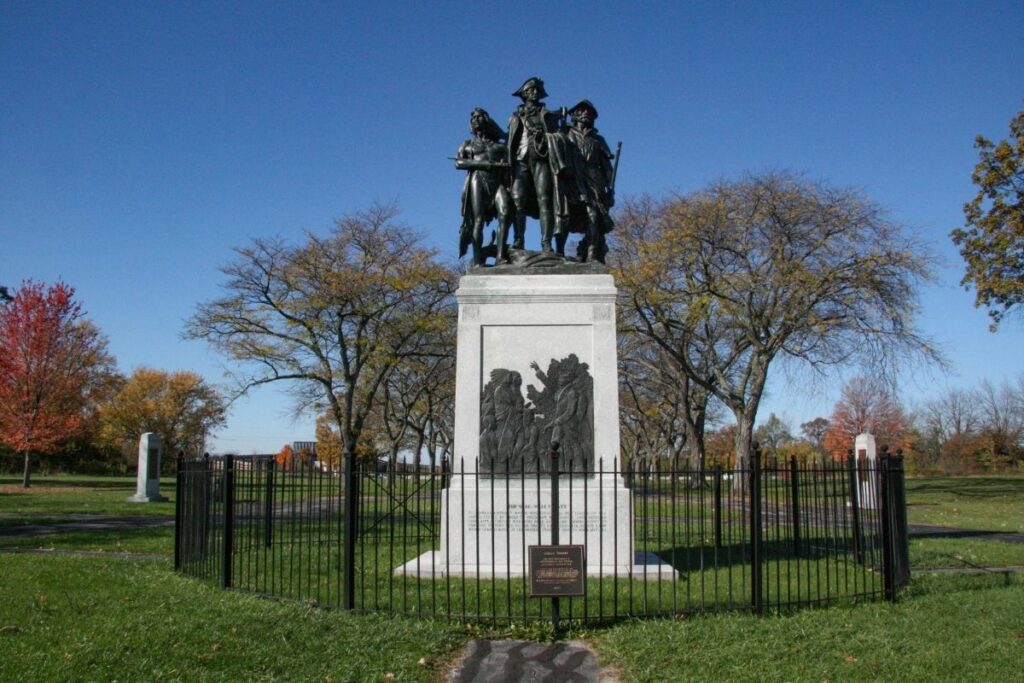
Lewis and Clark National Historic Trail
The Lewis and Clark National Historic Trail follows the route Meriwether Lewis and William Clark took across the United States’ newly purchased territory. The trail starts at Camp Dubois, Illinois, and passes thru Missouri, Ohio, Kansas, Iowa, Nebraska, South Dakota, North Dakota, Montana, Idaho, Oregon, and ends in Washington. The trail is a combination of auto, land, and water routes.
The Lewis and Clark expedition started in May 1804 with the goal to find a practical route across the western region of North America. They were to lay claim to these lands to limit European expansion. The expedition was a success. Lewis and Clark crossed the Louisiana purchase and made it to the Pacific Ocean. They recorded the plants, animals, and landscapes as they traveled. They laid the foundations for future relationships with the American Indian tribes of the relationships.
The trail was established on November 10, 1978. There are over 100 stops along the trail.
Things to do in: Hiking, Auto Tours, Museums,
How to get there: The sites are located in the 16 states the trail runs through.
Where to Stay: There are various places to stay along the trail.
Entrance Fee: There may be nominal fees at trail-related federal, state, or locally owned historic sites and interpretive facilities.
Official Website: Click Here
Map: Download
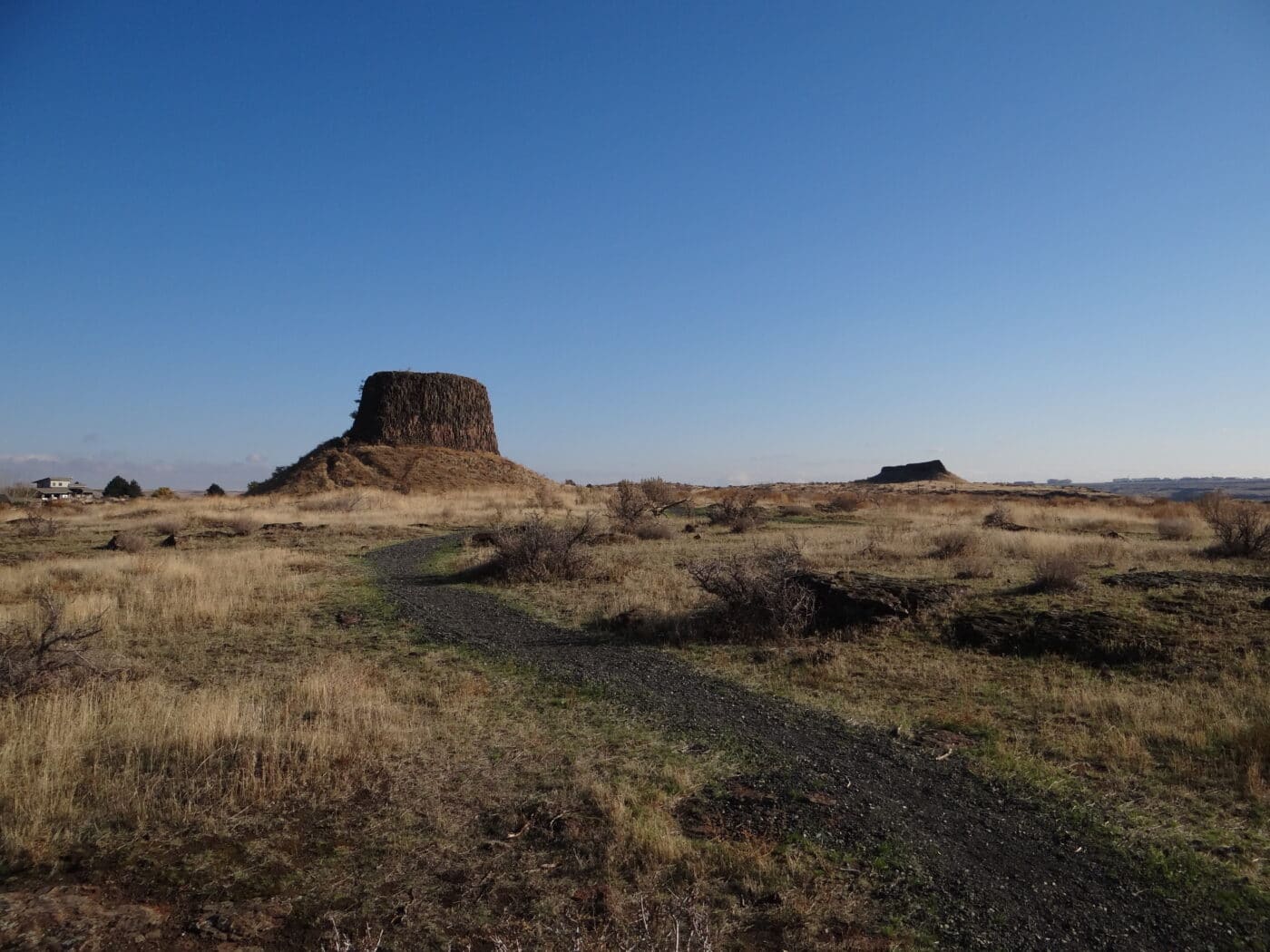
National Aviation Heritage Area
Aside from the Dayton Aviation Heritage National Historical Park, the journey towards the invention of motorized air vehicles is recognized in many key areas throughout Ohio. Eight counties are declared under the National Aviation Heritage Area in Ohio. Namely, Montgomery, Greene, Miami, Clark, Warren, Champaign, Shelby, and Auglaize counties. The National Aviation Heritage Area aims to be the center of aviation heritage in America and preserve the legacy of the Wright brothers. Visitors make their way across the different counties to discover, learn, and explore the history of aviation and aerospace in more than fifteen sites throughout the area.
Orville and Wilbur were recognized and credited for inventing, building, and flying the first motorized airplane. This heritage area aims to remember their contributions to how we know aviation today. Other persons of interest in aviation along with the Wright Brothers are also celebrated through these historic sites.
Aside from aviation history, the area also aims to promote aerospace history. The famous man on the moon, Neil Armstrong, was born and raised in Wapakoneta, Ohio.
Visitors are welcome to explore the different counties and points of interest like the Carillon Historical Park and several museums throughout Ohio to learn more about flight and get inspired by the aviation and aerospace history of the U.S.
The National Aviation Heritage Area (NAHA) was Congressionally designated in 2004.
Things to do: Visit Museums, Guided Tours, Visit Historic Landmarks
How to get there: The fifteen sites are spread out in different counties of Ohio. It is recommended to explore the areas by car.
Where to Stay: Depending on the county, there are many chain hotels, hostels, and other accommodations available around the area.
Entrance Fee: Free but the museums may charge an entrance fee.
Official Website: Click Here
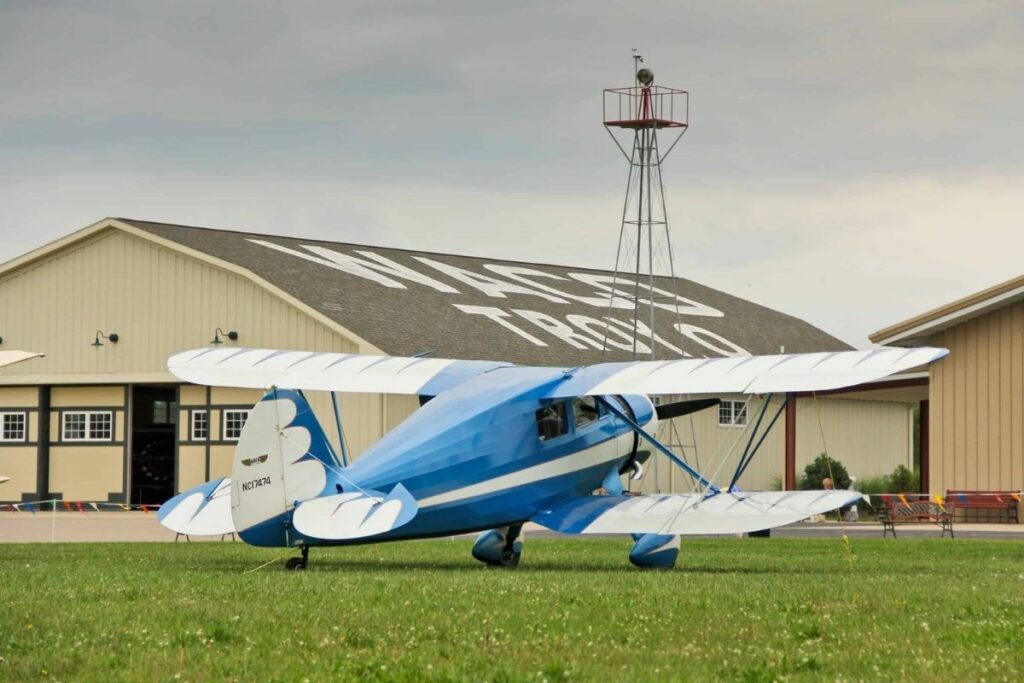
Photo courtesy of Miami County Visitors Bureau.
List of National Forests in Ohio
National Forests are not managed by the National Park Service and are not part of the National Park System. The National Forests are managed by the U.S. Forest Service under the U.S. Department of Agriculture. Typically, these areas focus on protecting forest areas for present and future use. Due to the different management mandates, National Forest usually allows for outdoor recreational activities such as mountain biking, ATV, and more horseback riding options.
Here are the National Forests in Ohio:
- Wayne National Forest
Planning to explore the Midwest? Download your free Midwest National Park Checklist HERE.
Frequently Asked Questions about Ohio National Parks
How Many National Parks in Ohio?
There are 9 National Parks in Ohio. One holds the title of National Park and the other 8 hold the titles of National Monumen, National Historical Park, National Historic Site, National Scenic Trail and Memorial.
What are the 8 national parks in Ohio?
The 9 National Parks of Ohio are Charles Young Buffalo Soldiers National Monument, Cuyahoga Valley National Park, Dayton Aviation Heritage National Historical Park, First Ladies National Historic Site, Hopewell Culture National Historical Park, James A. Garfield National Historic Site, North Country National Scenic Trail, Perry’s Victory, and International Peace Memorial, and William Howard Taft National Historic Site,
What are the two national parks in Ohio?
Ohio only has 1 park holding the title of National Park which is Cuyahoga Valley. There are two National Historical Parks which are Hopewell Culture and Dayton Aviation Heritage.
What national parks are near Ohio?
In addition to Cuyahoga Valley National Park in Ohio, national parks near Ohio includes Indiana Dunes National Park, Mammoth Cave National Park, New River Gorge National Park, Great Smoky Mountains National Park, and Shenandoah National Park.
Is there only one National Park in Ohio?
Yes, there is only one National Park in Ohio.
Is there a National Park or a famous landmark in Ohio?
There are 9 Ohio National Parks.
How many state parks are there in Ohio?
There are currently 74 State Parks in Ohio.
Ohio’s Neighboring States
Planning to visit a few of the National Parks in Ohio and wondering about what national parks are in neighboring states. Here are the list of National Parks in surrounding states.
- Indiana National Parks – Indiana has Indiana Dunes National Park and 2 other units.
- Kentucky National Parks – Kentucky has Mammoth Cave National Park and 6 other units.
- Michigan National Park – Michigan is home to Isle Royale National Park and 4 other units.
- Pennsylvania National Parks – Pennsylvania has 19 NPS units.
- West Virginia National Parks – West Virginia is has New River Gorge National Park and Preserve and 5 other units.
Final Thoughts on the National Parks of Ohio
I hope this guide to the National Parks of Ohio is helpful as you plan to explore these amazing National Parks.
Pin for Later: National Parks in Ohio: Explore the 9 Ohio National Parks (2023 Update)

Jennifer Melroy
Hi, I'm Jennifer!

Welcome to the wonderful world of National Parks. I'm here to help you plan your NEXT amazing adventure through the United States National Parks and beyond. I want the national parks to be accessible to all.
I live in Tennessee, and when I'm home, you can find me hiking in the Smokies and the Cumberland Plateau.
58/63 National Parks
250+/423 National Park Units
Want to know more? Start Here.
ACKNOWLEDGEMENT OF LAND
On this site, we promote travel to the United States and beyond that are the traditional lands of Indigenous and First Nations peoples.
With respect, I make a formal land acknowledgment, extending my appreciation and respect to these lands’ past and present people.
To learn more about the people who call these lands home, I invite you to explore Native Land.
DISCLAIMER
National Park Obsessed assumes no responsibility or liability for any errors or omissions in the content of this site (NationalParkObsessed.com). The information contained in this site is provided with no guarantees of completeness, accuracy, usefulness or timeliness. You are encouraged to conduct your own due diligence before acting on the information provided on this site and should not rely on the opinions expressed here.
There is an inherent risk in all outdoor recreation activities, the reader assumes all responsibility for their own personal safety.
DISCLOSURE
We are a participant in the Amazon Services LLC Associates Program, an affiliate program designed to provide a means for us to earn fees by linking to Amazon.com and affiliated sites.
Privacy Policy • About Us • Contact
Select stock photography provided depositphotos
Copyright ©2023 National Park Obsessed, LLC
Last Updated on 12 Dec 2023 by Jennifer Melroy



